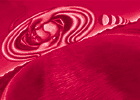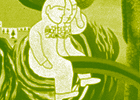| Home | About us | Contemporary | Resources | Contact us |
  |
|
Public art, and murals in particular, became a means of accessing a wide range of audiences who would not necessarily choose to enter a traditional art gallery. Unlike private and architectural muralists, public mural painters are less likely to become known as global brand names. It is the collective work that achieves the fame more than the name of the individual artist. The medium and, more importantly, the cause behind the painting become the brand. In many cases of what is often referred to as community art or even graffiti, mural artists come together to create influential social movements such as the SPARC in Los Angeles and the Public Art Squad in Sydney. Mural painting more than many other art form has a direct impact on the buildings that we pass through in our daily lives. Clever optical illusions created with wall paint can create an extraordinary visual impact and transform a neglected facade or deserted location. The industry of architectural painting grew up in the USA around the turn of the 20th century. Prairie School architects like George Washington Maher and Frank Lloyd Wright commissioned paintings for the exterior of their buildings that incorporated scenes of the surrounding landscapes and complemented the interior decoration. As part of the WPA cultural programme, hundreds of schools, libraries, post offices and other governmental buildings in the United States in the 1930’s and 1940’s were decorated in this style. As tastes changed, these murals were often removed and destroyed. Although the original practice has ended, the concept has since been developed in the United States where the use of large-scale architectural painting established a trend that transformed the modern urban landscape. Where public murals tend to be inclusive, driven by local communities and acting as an overt branding tool to identify local people or a particular cause, private murals are more exclusive, created for a specific purpose and to be viewed by a restricted number of public visitors. Their purpose is often to create a particular atmosphere within a location rather than communicate a strong socio-political message. Private murals have over the centuries been subject to the whims of fashion. For centuries we have seen a decline in the historic tradition of decorating private homes and public building interiors with large-scale murals and frescoes. However, there are signs of a revival of interest, certainly in historic painting techniques. Luxury wall coatings mixed from primitive pigments are once again being used to create stunning, colourful interiors in private and commercial settings. Where the demand for high quality materials and bright, textured colours combines with a desire for contemporary subjects, we start to create a new trend in mural painting. Reflecting the highly individualistic approach now taken to modern interiors, patrons are looking for the simplicity of decorative schemes that reflect their lifestyles and bring some personal meaning. The desire for calm, spiritual self-expression within the home or community in contrast to the chaos of urban working environments helps create more original design solutions. Wall painting is perfectly poised to fulfil this aspiration. Mural artists have an essential role to play in bringing personal themes to life with the same energy and imagination as the great illusionary wall painters of past generations. If you’d like to learn more about public and private murals why not click on the titles below. Cultural Awareness In The Community Political Awareness In The Community History In The Community Sport In The Community The Environment In The Community Education In The Community Healthcare In The Community Trompe L'Oeil Architectural Murals |
 |
 |
 |
 |
 |